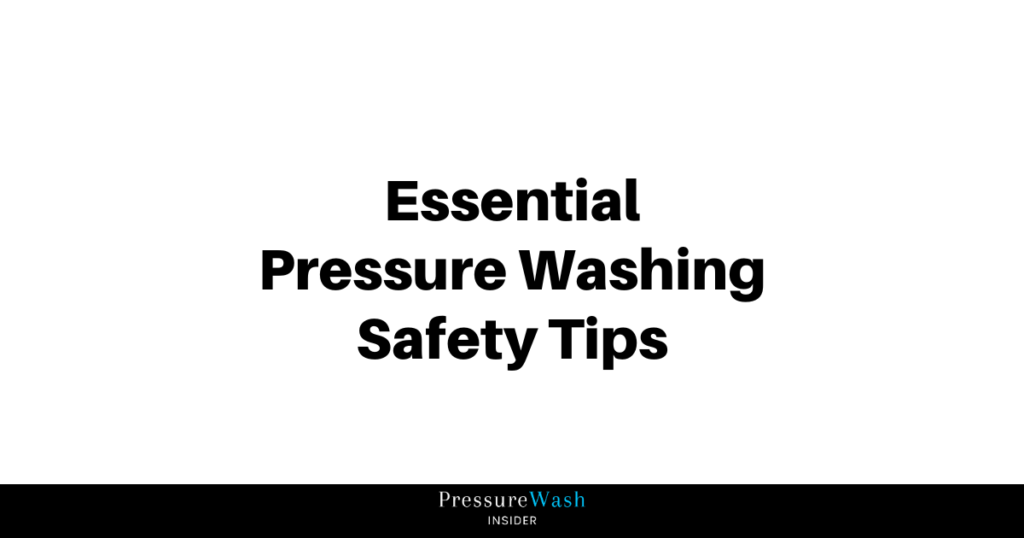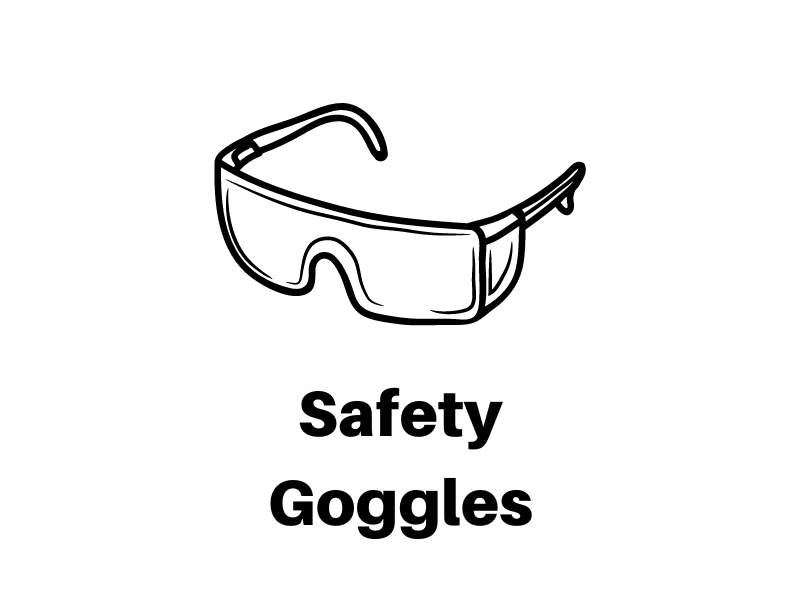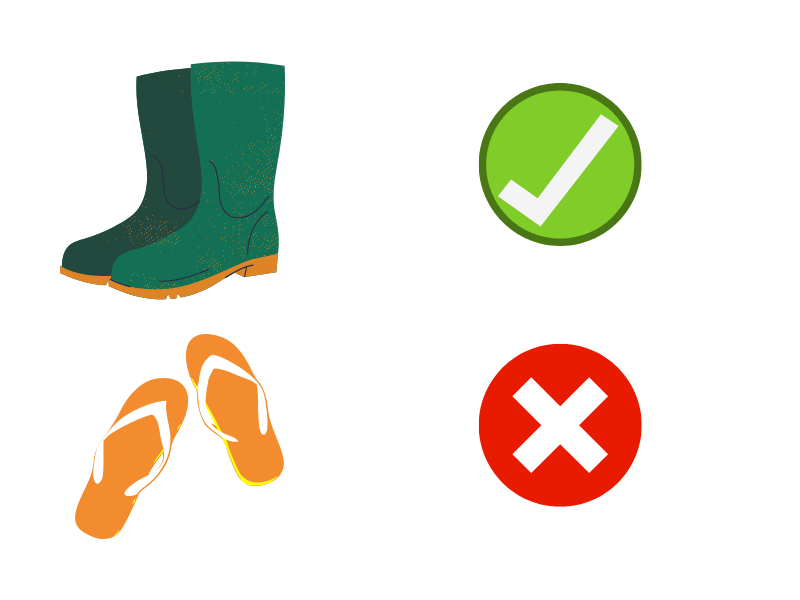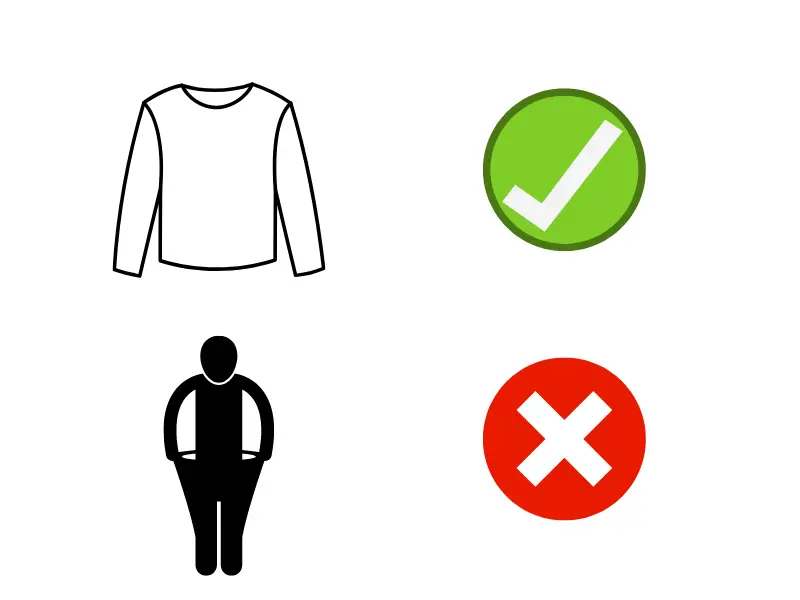
In 2017, the Consumer Product Safety Commission reported that approximately 6,057 individuals sought emergency room treatment for injuries related to pressure washer usage. Shockingly, 14% of these ER visits resulted in further hospitalization.
While it can be a convenient and efficient way to tackle tough dirt and grime, it’s important to prioritize safety when using a pressure washer.
In this article, we will discuss essential pressure washing safety tips to ensure that you can complete your cleaning tasks without any accidents or injuries.
Table of Contents
Understanding Pressure Washers
Before diving into safety tips, it’s crucial to have a basic understanding of pressure washers and how they work.
Pressure washers use a high-powered stream of water to clean surfaces by removing dirt, mildew, mold, and other debris.
The pressure is measured in pounds per square inch (PSI), and the volume of water flow is measured in gallons per minute (GPM).
Pressure washers come in different sizes and types, including electric and gas-powered models.
Electric pressure washers are generally lighter, quieter, and more suitable for smaller cleaning tasks, while gas-powered models provide more power and are ideal for larger areas or heavy-duty cleaning.
Choose the Right Pressure Washer
Selecting the appropriate pressure washer for your cleaning needs is vital to ensure both efficiency and safety.
Consider the PSI and GPM ratings of the machine. Higher PSI ratings are suitable for heavy-duty cleaning tasks, while lower PSI ratings are more appropriate for delicate surfaces.
For example, if you’re cleaning a concrete driveway with deep stains, a pressure washer with a higher PSI rating, such as 3,000 PSI or more, would be suitable. On the other hand, if you’re cleaning a wooden deck, a lower PSI rating, around 1,500-2,000 PSI, would be safer to prevent damage to the wood.
Additionally, consider the GPM rating, as it determines the speed at which water is delivered. Higher GPM ratings provide faster cleaning but also require more water. Finding the right balance between PSI and GPM is crucial for efficient and safe cleaning.
Pressure Washing Safety Tips
Dress for Safety
When operating a pressure washer, it’s essential to wear protective clothing to shield yourself from potential hazards. Here are some clothing items to consider:
- Eye Protection: Always wear safety goggles or a face shield to protect your eyes from flying debris and water splashes. The high-pressure water stream from a pressure washer can dislodge dirt and other particles, posing a risk to your eyes.
- Footwear: Choose closed-toe shoes with slip-resistant soles to provide proper traction and protect your feet from potential injuries. Avoid wearing sandals or flip-flops, as they don’t provide adequate foot protection.


- Clothing: Wear long sleeves and pants made of sturdy materials to protect your skin from high-pressure water and any chemicals used in the cleaning process. Loose clothing can get caught in the equipment, so opt for fitted garments.
- Gloves: Use chemical-resistant gloves to safeguard your hands from harsh cleaning agents and to provide a better grip on the pressure washer. Chemicals can cause skin irritation or burns, so it’s important to protect your hands during the cleaning process.


Prepare the Work Area
Before you start pressure washing, it’s essential to prepare the work area to minimize potential risks and accidents. Here’s what you should do:
Remove Obstacles
Clear the area of any objects, such as toys, furniture, or loose debris, that could interfere with your cleaning or pose a tripping hazard. Remove any obstacles that may obstruct your path or cause accidents.
Protect Surroundings
Cover delicate plants, electrical outlets, outdoor furniture, and other vulnerable items with tarps or plastic sheeting to prevent damage. The force of the pressure washer can dislodge or damage objects in its path, so taking precautions is crucial.
Check for Hazards
Inspect the work area for potential hazards, such as loose electrical connections, slippery surfaces, or uneven ground. Address any issues before starting the pressure washing process. Repair or secure any loose items or surfaces to prevent accidents.
Proper Handling of the Pressure Washer
Knowing how to handle the pressure washer correctly is crucial for your safety. Here are some pressure washing safety tips to keep in mind:
- Read the User Manual: Before using a pressure washer, carefully read the manufacturer’s user manual to familiarize yourself with the specific instructions, safety guidelines, and maintenance requirements. Each pressure washer model may have unique features and operating procedures.
- Maintain a Safe Distance: Always maintain a safe distance between the pressure washer nozzle and the surface you are cleaning. Start with a greater distance and gradually move closer until you achieve the desired cleaning effect without causing damage. Maintaining a safe distance helps prevent injuries and protects the surfaces from excessive pressure.
- Use the Right Nozzle: Different cleaning tasks require different nozzles. Use a wide-angle spray nozzle for large surfaces and stubborn dirt and a narrow-angle nozzle for more precise cleaning or removing tough stains. Refer to the pressure washer’s user manual to determine which nozzle is best suited for each cleaning task.
- Never Spray People or Pets: Never direct the pressure washer stream toward people, pets, or yourself. Severe injuries can be caused by the forces of water. Keep a safe distance from others and ensure that no one is within the range of the pressure washer stream while you’re operating it.
Chemical Handling and Storage
In some cases, pressure washing may require the use of cleaning chemicals. Here’s how to handle and store them safely:
Follow Instructions
Always follow the manufacturer’s instructions when using cleaning chemicals. Use them sparingly and avoid mixing different products, as this can create dangerous chemical reactions. Some chemicals may require dilution or specific application methods, so it’s crucial to adhere to the instructions provided.
Proper Ventilation
Ensure proper ventilation when using cleaning chemicals to avoid inhaling toxic fumes. If working in an enclosed area, consider using a respirator mask. Open windows and doors to allow fresh air circulation, and avoid using chemicals in confined spaces without adequate ventilation.
Use of pressure washers in enclosed spaces lead to the buildup of carbon monoxide and result in asphyxiation.
ilt.safetynow
Store Chemicals Safely
Store cleaning chemicals in a secure, dry location away from children and pets. Keep them in their original containers and away from heat sources or open flames. Ensure that the containers are tightly sealed to prevent spills or leaks that could lead to accidents or chemical exposure.
Conclusion
Pressure washing can be a highly effective method for cleaning a wide range of surfaces, but it’s essential to prioritize safety. By following these essential pressure washing safety tips, you can ensure that your cleaning tasks are completed efficiently without any accidents or injuries.
FAQs (Frequently Asked Questions)
- What are the OSHA regulations for pressure washing?
- OSHA regulations for pressure washing ensure worker safety through training, PPE, safe practices, and equipment maintenance. OSHA also emphasizes the importance of proper ventilation and the use of approved cleaning agents.
- What should you not do with a pressure washer?
- Avoid pointing the pressure washer at people, electrical sources, fragile surfaces, or tampering with safety features.
- Can pressure washing damage my siding or other surfaces?
- Pressure washing done incorrectly or with excessive pressure can damage surfaces. It’s crucial to use the appropriate pressure settings and nozzles for each specific surface. Test a small, inconspicuous area before proceeding with full-scale pressure washing to ensure that no damage occurs.
- How often should I perform maintenance on my pressure washer?
- Regular maintenance is essential to keep your pressure washer in good working condition. Refer to the manufacturer’s instructions for recommended maintenance intervals and tasks. This usually includes cleaning or replacing filters, inspecting hoses and connections, and checking for any signs of wear or damage.
- Can I pressure wash while standing on a ladder?
- It’s highly recommended to avoid using a pressure washer while standing on a ladder. The force of the water can cause a loss of balance, leading to accidents and injuries. Use extension wands or telescopic poles to reach high areas safely, or consider hiring a professional for elevated surfaces.
- Should I wear a mask when pressure washing?
- Wearing a mask while pressure washing is recommended to protect against airborne particles. A mask with a high filtration rating, such as an N95 mask, is recommended for optimal protection. However, it is important to note that wearing a mask alone may not provide complete protection against all hazardous substances, so it is crucial to follow other safety measures as well.
- Can a pressure washer cut through the skin?
- Yes, a pressure washer can cut through the skin, so proper precautions and immediate medical attention are necessary if it occurs. Always wear appropriate protective clothing, including gloves and safety goggles, to minimize the risk of injury.
Remember, safety should always be your top priority when using a pressure washer. By following these essential tips, you can enjoy a clean environment while keeping yourself and others safe from harm.
